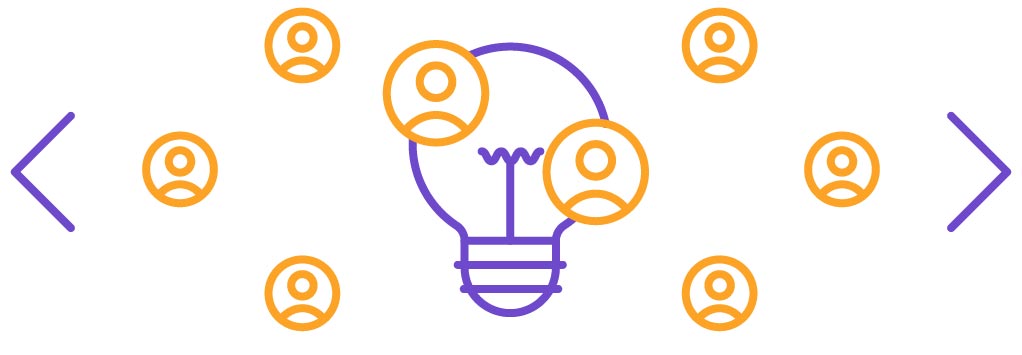Introduction
On this page, we’re detailing considerations and tips for starting a new remote role.
Take time to internalize values
Absorbing a company culture in a distributed setting occurs over time, as one witnesses behaviors that are supported, praised, and discouraged. A benefit to working in an distributd setting is that culture is (ideally) documented.
As you settle into a new role, ensure that you devote time to reading and internalizing company values. While this may feel like a skippable activity, understanding the values early on enables you to have a strong foundation on which to build. Every decision you make in your role should be guided by values. If you have questions about how values are lived, take time during onboarding to consult with others.
Adjusting to a self-service mindset

Roivant IT’s workplace methodologies may seem unusual to those with experience in more traditional organizations. You should not expect to transfer the norms of large, colocated corporations into a progressive, distributed scenario. Those who thrive in Roivant IT take the opportunity to drop prior workplace baggage at the door, embrace a liberating and empowering set of values, and give themselves permission to truly operate differently.
So differently, in fact, that some of Roivant IT’s most effective processes would be discouraged or forbidden in conventional corporations. It’s not a trap. It’s the future of work.
Focus your workspace
If you’ve managed to be productive despite operating within a conventional open office floor plan, you’ll likely be thrilled with your productivity level as a partial or wholly remote team member.
However, engineering an optimal workspace may not come naturally — particularly if you’ve worked in environments which were defined prior to you joining.
For new remote workers, it’s important to think about where you prefer to work on a daily basis. Optimize this for focus. Consider spaces in your home, coworking venue, etc. where you will be largely free from distraction. Given that most offices are riddled with distractions, the ability to design a space that dodges them is a boon for remote workers.
The more focused you are due to your surroundings, the more quickly you can accomplish your duties and move on to important non-work activities.
Pay close attention to ambient sounds, visual distractions, and areas of high traffic. Aim to dedicate a space where only work occurs, enabling you to focus specifically on work while there and healthily disconnect when you exit.
Establish routine with family and friends
When you physically leave a home to go to work, it signals to friends and family that you are not easily reachable, and that you are focused on work-related tasks. In a “work from anywhere” scenario, you’re able to remain at home all day should you so choose.
For families who are not used to this, boundaries can be difficult to establish and maintain. When an employee is visibly at home, it may signal to other family members that they are accessible.
Consider having an open, honest conversation with family members about your working hours. Explain that while you are indeed home, you should be considered unreachable unless there’s a significant level of need that would roughly align with justifying an office interruption in a colocated setting.
This tends to be particularly vital to discuss with children, who may struggle to understand why a working parent is in the home but unable or unwilling to engage with them for certain parts of the day.
By explaining that a working parent is able to spend more time engaging immediately prior to and after work due to dropping the commute, it helps frame the new scenario in a way that spotlights the benefits to a child. To take this a step further, consider arranging your work schedule to allow for a midday activity with a child. By engaging in this manner, and explaining that such a luxury would have been impossible in a colocated setting, it can help reinforce the benefits of remote work.
Consider visual availability indicators that will allow friends and family to easily know whether or not you’re willing to be contacted during working hours.
Experiment with work environments

While working from home is an ideal scenario for many, you may find that you’re happier, more fulfilled, and more productive elsewhere. If you feel burdened or socially drained while working from home, consider a coworking space or an outdoor area.
It’s important to consider unique work environments if you’re new to a remote role. If you’ve been forced into an office for your entire career, you may not instinctively know which work environment is best for you. By experimenting and asking for advice from others who have worked remotely before, you may discover a side of yourself that’s finally able to flourish due to newfound flexibility.
Prioritize ergonomics
Whether it’s in your home office, at a coffee shop, a coworking space, or elsewhere, consider ergonomics in every instance.
Pay close attention to seating and posture, as well as repetitive stress on arms and wrists. It’s worth investing in equipment designed to help you work healthier. Cutting corners in this area now can lead to chronic pains in the future.
Procure the right equipment
Working remotely enables you to work from all types of environments. Those new to remote working are unlikely to have equipment optimized for that flexibility.
Items such as standing/treadmill desks, standing mats, external keyboard/mice, high-definition webcams, webcam lighting, noise-cancelling headphones, a dedicated microphone, a laptop riser, and ergonomic cases/backpacks should be considered depending on your work scenario.
Roivant allows employees to expense up to $1000 for home office equipment.
Bolster your internet connection, and consider redundancy

It’s important to remember that remote workers are responsible for their own connectivity. This may require you to invest in a more substantial home internet connection. It’s worth consider redundancy in this department as well. For example, upgrading your smartphone plan to support tethering or investing in a dedicated mobile hotspot or MiFi. This ensures that you have a fallback connection in place should your primary connection fail.
Secondary connections are particularly important when multiple family members work from home. For example, if one member is uploading a large file, that may impact the audiovisual quality of another member’s video call. A secondary connection allows each working member to operate on their own without impacting the bandwidth of the other.
Be intentional about informal communication
Strive to participate when it comes to informal communication. While this requires the use of an unusual muscle — particularly for those who have not worked in a remote setting before — it’s important to form and foster relationships.
Making social connections with coworkers is vital to building trust within your organization. One must be intentional about designing informal communication when it cannot happen organically in an office.
Ask questions and learn from others

If you’re new to working remotely, don’t be afraid to ask others within your company for advice, or even for someone to serve as a mentor as you acclimate.
Too, be proactive in asking questions and finding remote communities to learn from. Several of these are listed below.
Resist the urge to operate the same as before
As aptly stated in Basecamp’s Handbook, there’s as much to unlearn as there is to learn when it comes to thriving in a remote role.
Remote work enables a great deal of flexibility, freedom, and autonomy. It also requires adaptability when it comes to communication, and may require experimentation by the team member to reach peak enjoyment.
It can be tempting for new remote workers to simply implement tactics used in colocated spaces, but from their home or a coworking space. For example, learning to search for answers within documentation rather than tapping someone on the shoulder and asking a question.
This also applies to more nuanced aspects of work, including employee perception. Whereas working from a unique place or doing things differently may be discouraged in a colocated space, consider celebrating such diversity in a remote space.
There is more benefit to working remotely than simply losing the commute. Those new to this paradigm should give themselves permission to explore, experiment, and learn from others both on their team and on remote-centric forums.